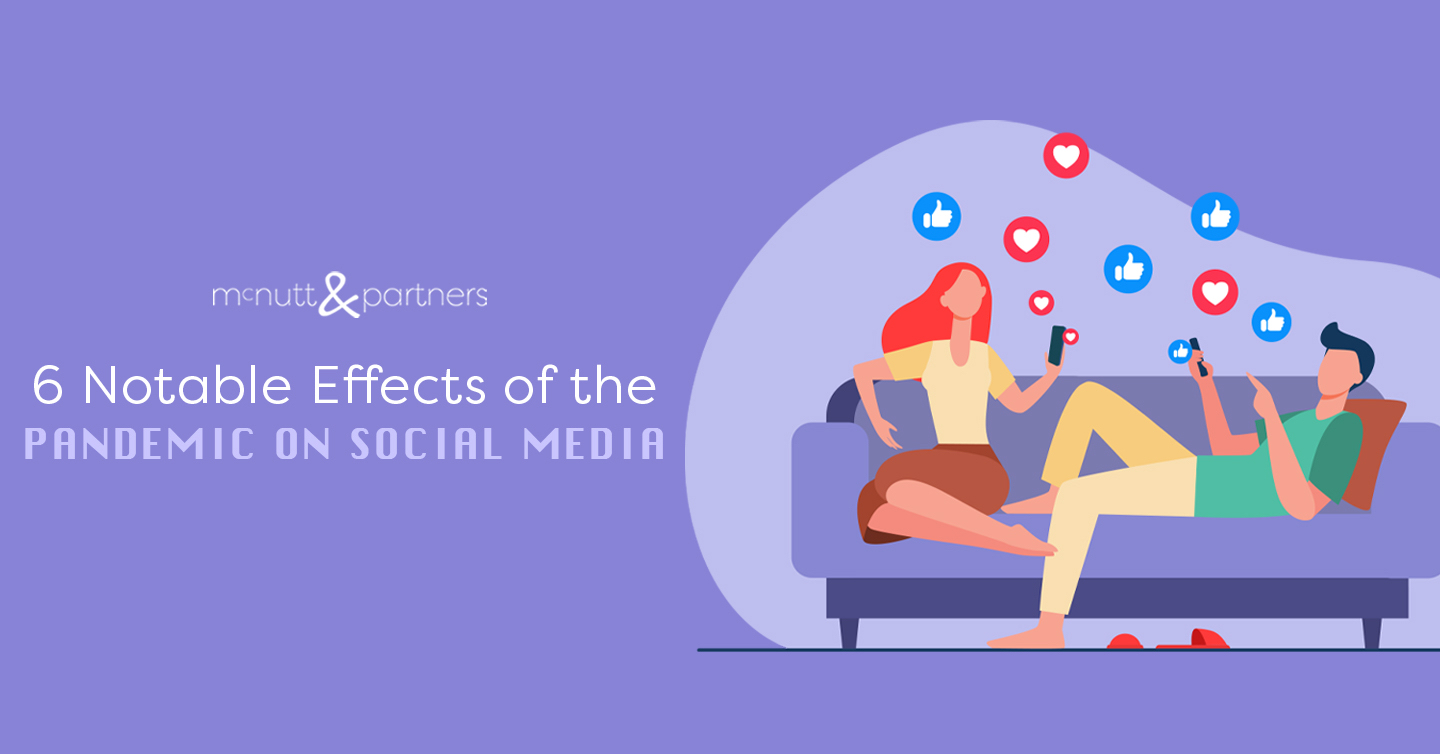It’s been almost two years since the onset of the COVID-19 pandemic. We know many aspects of the world have changed since that time. It’s no surprise social media is one of those global phenomena that has experienced marked changes. These effects of the pandemic on social media are a reflection of diminished opportunity for face-to-face interaction.
People are spending more time on social media.
For many, spending more time at home has meant spending more time on social media. When unable to venture beyond the walls of home during the pandemic, social media became that way to venture out—and stay connected.
According to HubSpot, the number of social media users worldwide increased 11 percent between 2019 and 2021. In addition, social media users went from spending an average of 56 minutes per day in 2019 to 65 minutes per day in 2020-21.
Users are looking at social media more consistently throughout the day.
With the traditional 8-to-5 job at the office, many people were limited to certain times of the day when they could use social media (lunch breaks, bathroom breaks, etc.). This meant the majority of users were jumping on either early morning before work or in the evenings.
Stats show that since people started working from home in the pandemic, the times of day we are using social media has leveled out some. Sprout Social, for instance, suggests the best times to post on Facebook are now 10 to 11 a.m.
Video consumption is higher than ever.
Video is currently hands-down the most-consumed type of content on social media. It makes sense then that TikTok, a video-based platform, became a household name during the pandemic. Speculation is that people like the sense of reality and engagement that video brings to the table. HubSpot tells us that in 2020, the number of minutes people spent watching social media video increased 85 percent.
Things have gotten a bit more casual.
Speaking of the “reality” of video, another one of the effects of the pandemic on social media is the nature of the content itself. Filters portraying perfection have taken a backseat to the authenticity of messy homes, sweatpants and people expressing their real emotions in response to our changing world.
Lighthearted content is more in demand.
Another shift in content type has to do with lighthearted content vs. more serious content. During the trials of the pandemic, many people turned to social media to be uplifted and entertained. A rise in preferences for more positive content paints social media as a place to experience relief from real-world problems.
Niche groups on social have become more popular.
With much of our interaction becoming virtual during the pandemic, people turned to social media to find groups that catered to their personal interests and ideas. For example, since the in-person yoga club was no longer gathering, we joined virtual yoga clubs (many housed in the form of niche social media groups) instead. In addition to a place to find uplifting content, social media during the pandemic has served as a place to generate a sense of community in remote form.
Summary
With more time spent at home, and more time on our hands in general, social media has seen both an upsurge in use and changes in the way it’s being used in the wake of the COVID-19 pandemic. Are these effects of the pandemic on social media here to stay? Time will tell. For now, as marketers, it can be helpful to take notice of these trends and the way we can use them to our advantage to connect with consumers.
McNutt & Partners is a full-service advertising and digital marketing agency. Contact us today for your marketing needs! Call 334-521-1010, or visit our contact page

